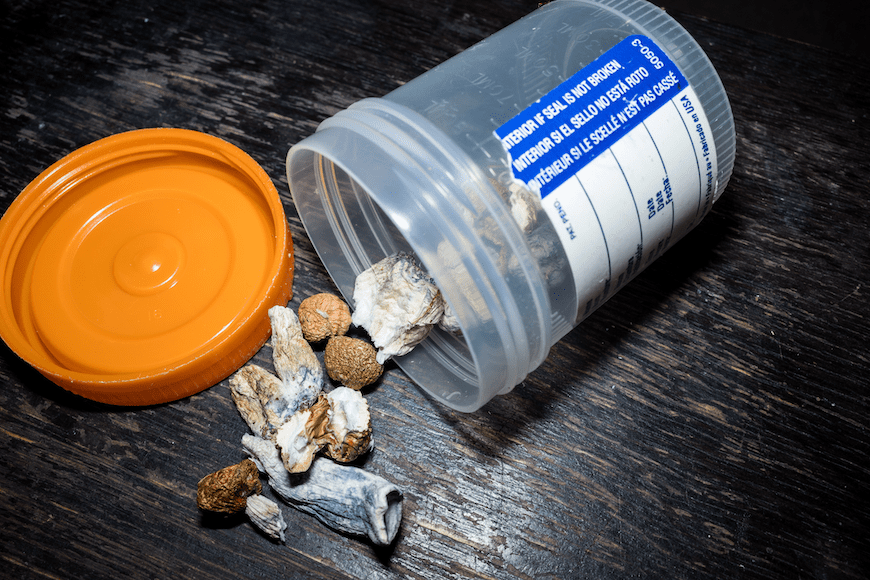The vagus nerve plays a crucial (if underrated) role in facilitating how the brain communicates with the rest of the body. It helps regulate the body’s immune response and mental health functions. While how it works remains a little murky, research into gut-derived molecules and vagal pathways has the potential to identify potential targets for microbiome-based therapies, such as vagus nerve stimulation (VNS).
But despite a history that dates back to the 19th century, VNS has only recently earned regulatory approval as a mental health treatment. Over the last few years, the U.S. Food and Drug Administration (FDA) signed off on implants designed to treat epilepsy and depression, even though surgical risks persisted.
Now, a group of University of Texas at Dallas researchers have published research that shows promising results from a first-of-its-kind clinical trial using VNS to treat post-traumatic stress disorder (PTSD) in patients who don’t respond to the usual therapies.
The trial, appearing in the journal Brain Stimulation, represents a milestone in neuromodulation-based treatment for psychiatric conditions.
Vagus Nerve Results Exceed Expectations
While PE and pharmacological treatments help most patients, a large subset of patients remain resistant. To study this new approach, researchers paired a next-generation, small VNS implant with prolonged exposure (PE) therapy. They wanted to improve PE by synching it up with short nerve stimulation bursts meant to boost synaptic plasticity.
This open-label early feasibility study enrolled nine individuals diagnosed with moderate to severe treatment-resistant PTSD. The researchers put the participants through a 12-session PE therapy regimen while administering a timed VNS through a wireless, implantable device.
The results exceeded expectations. All nine participants no longer met the diagnostic criteria for PTSD after completing the therapy. The researchers also noted clinically significant improvements based on standard PTSD measures, including the Clinician-Administered PTSD Scale (CAPS-5), the PTSD Checklist (PCL-5), and anxiety and depression metrics.
Better still, the benefits endured for at least six months after the end of therapy, reinforcing its potential as a long-term treatment option.
“In a trial like this, some subjects usually do get better, but rarely do they lose their PTSD diagnosis,” co-author and neuroscience professor Michael Kilgard, PhD, explained. “Typically, the majority will have this diagnosis for the rest of their lives,” Kilgard said. “In this case, we had 100% loss of diagnosis. It’s very promising.”
Built on a Foundation of Research
The novel therapy regime pulls from a decade of preclinical research that’s explored how VNS can boost plasticity in the neural networks tied to fear extinction. In animal models, pairing nerve stimulation with exposure therapy consistently led to improved outcomes. For the first time, this paper offers evidence that it works with humans, too.
Unlike other techniques – such as transcranial magnetic stimulation (TMS) or deep brain stimulation (DBS) – which tweak neural circuits directly, VNS operates in a more subtle way. By stimulating the vagus nerve, the therapy triggers widespread neuromodulatory systems, including those that release acetylcholine and norepinephrine.
Since the study included the first use of this miniaturized implanted system in humans, safety remained a priority. And the study’s authors found no serious or unexpected device-related adverse events. The mild side effects that they did observe, such as sleep disruption and nausea, didn’t last long, and resolved themselves without intervention.
“The technology we have is above and beyond anything else that’s out there. The device is about 50 times smaller than our version from just three years ago,” co-author and neuroscience professor Robert L. Rennaker, PhD, pointed out. “The 49 people in the Dallas area with our devices have a combined 100 years of experience with it implanted. There have been no issues. The devices are all still functioning. And they don’t interfere with typical medical care. You can have an MRI, a CT scan or an ultrasound.”
A Note of Cautious Optimism
Despite the optimistic results, the researchers warn that these findings are preliminary. As a result, they added that larger, randomized controlled trials are necessary. In fact, they confirmed that a double-blind, placebo-controlled Phase 2 pilot study is already under way.
“We hope that it will represent another step toward FDA approval of a treatment that doesn’t exist now,” Kilgard added.
Further Reading
Hyperbaric Oxygen Therapy Shows Promise in Treating PTSD
Two-Year Outcome of Vagus Nerve Stimulation (VNS) for Treatment of Major Depressive Episodes



